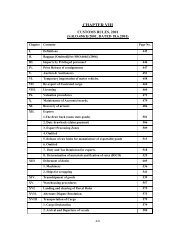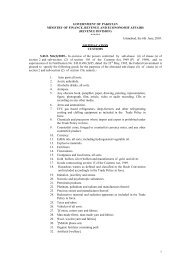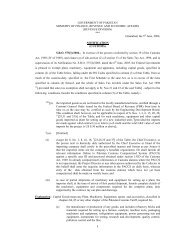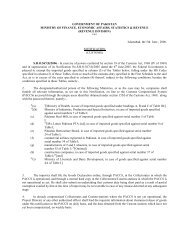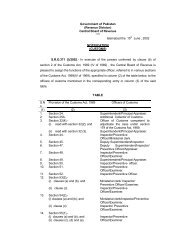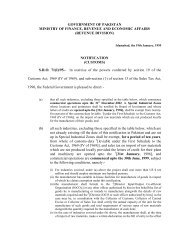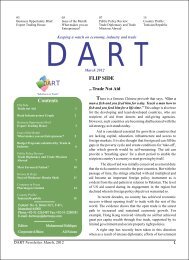47. Pakistan Economic Survey 2011-12 - Consultancy Services in ...
47. Pakistan Economic Survey 2011-12 - Consultancy Services in ...
47. Pakistan Economic Survey 2011-12 - Consultancy Services in ...
Create successful ePaper yourself
Turn your PDF publications into a flip-book with our unique Google optimized e-Paper software.
<strong>Pakistan</strong> <strong>Economic</strong> <strong>Survey</strong> <strong>2011</strong>-<strong>12</strong>estimated at 27.2 per thousand <strong>in</strong> <strong>2011</strong>-<strong>12</strong>; <strong>in</strong> 2008it was 25.0 per thousand. This <strong>in</strong>dicates amarg<strong>in</strong>ally improv<strong>in</strong>g trend.Similarly, the crude death rate measures the rate ofdeaths per one thousand people <strong>in</strong> a givenpopulation per year. A crude death rate of less thanten per thousand is considered as low while abovetwenty per thousand is considered as high.Accord<strong>in</strong>g to the World Population Data Sheet<strong>2011</strong>, the global crude death rate <strong>in</strong> 2010 was 8persons per thousand. In <strong>Pakistan</strong> it was 7.3 perthousand <strong>in</strong> <strong>2011</strong>. It is worth mention<strong>in</strong>g that thecrude death rate decreased from 7.7 per thousand<strong>in</strong> mid-year 2008 to 7.2 per thousand <strong>in</strong> mid-year20<strong>12</strong>, which shows an improv<strong>in</strong>g trend (Fig.1).Infant mortality <strong>in</strong> <strong>Pakistan</strong> has also improved asthe country experienced a considerable decl<strong>in</strong>e <strong>in</strong>maternal and <strong>in</strong>fant mortality. Infant mortality was70.20 per thousand <strong>in</strong> mid year 2008, whichreduced to 69.00 per thousand live births <strong>in</strong> midyear 20<strong>12</strong>. The major reason for this decl<strong>in</strong>e isprovision of improved health facilities to controldiarrhea and pneumonia which can be fatal for<strong>in</strong>fants. Nevertheless, this decl<strong>in</strong>e is notsignificant, given the repeated pregnancies andbirths. The status of maternal health is improv<strong>in</strong>g<strong>in</strong> <strong>Pakistan</strong>. The maternal death rate decreasedfrom 400 per 100,000 live births <strong>in</strong> 2005-06 to 276per 100,000 live births <strong>in</strong> 2010. This decl<strong>in</strong>e is theresult of the strengthen<strong>in</strong>g of the four pillars ofsafe motherhood <strong>in</strong>clud<strong>in</strong>g family plann<strong>in</strong>g,antenatal care, clean safe delivery and essentialobstetrical care.Fig-<strong>12</strong>.1: Population OverviewCrude Birth & Death Rate3025201510502008 2009 2010 <strong>2011</strong> 20<strong>12</strong>Source: National Institute of Population Studies (NIPS)Population Census OrganizationCrude birth rateCrude death ratePopulation (mln)185180175170165160155Some of the selected demographic <strong>in</strong>dicators forthe period (2010-11 and <strong>2011</strong>-<strong>12</strong>) are posted <strong>in</strong>Table <strong>12</strong>.1.Table <strong>12</strong>.1: Selected Demographic Indicators2010-11 (1 st July) <strong>2011</strong>-<strong>12</strong> (1 st July)Total Population (Million) 177.1 180.71Urban Population (Million) 65.3 67.55Rural Population (Million) 111.8 113.16Total Fertility Rate (TFR) 3.5 3.4Crude Birth Rate (Per thousand) 27.5 27.2Crude Death Rate (Per thousand) 7.3 7.2Population Growth Rate (Percent) 2.05 2.03Life Expectancy (Year)- Females 65.8 66.1- Males 63.9 64.3Source: P&D Division, National Institute of Population StudiesThe demographic <strong>in</strong>dicators reflect improvement<strong>in</strong> the structure of the population and po<strong>in</strong>t tofuture trends. There is improvement <strong>in</strong> lifeexpectancy and a fall <strong>in</strong> the population growth rate.Increase <strong>in</strong> life expectancy <strong>in</strong>dicates the provisionof a better liv<strong>in</strong>g environment and health facilities<strong>in</strong> the country. The decl<strong>in</strong>e <strong>in</strong> fertility and theresultant decl<strong>in</strong>e <strong>in</strong> population growth lead to alower dependency ratio which may help <strong>in</strong>improv<strong>in</strong>g liv<strong>in</strong>g standards <strong>in</strong> the country.However the population growth rate is still higherthan other neighbor<strong>in</strong>g countries and is still achallenge for the government.162



